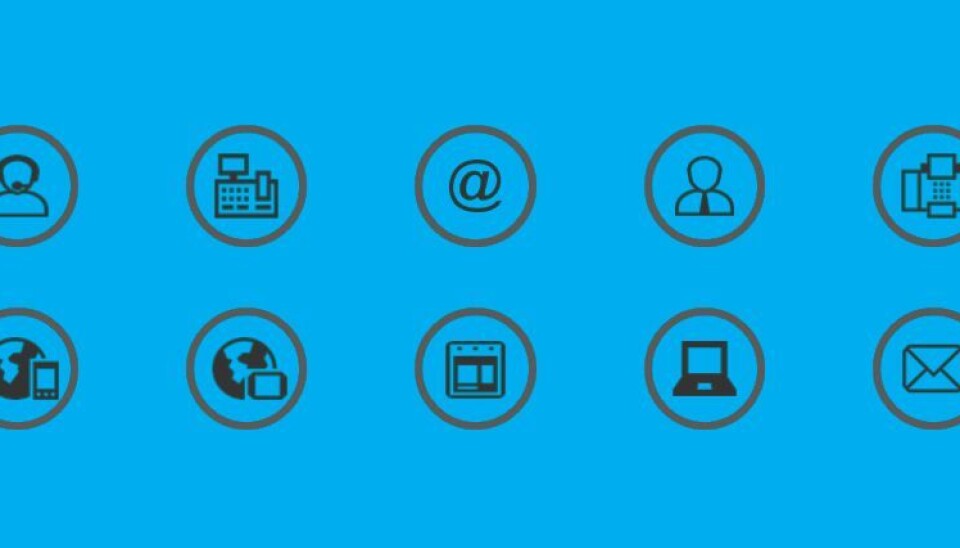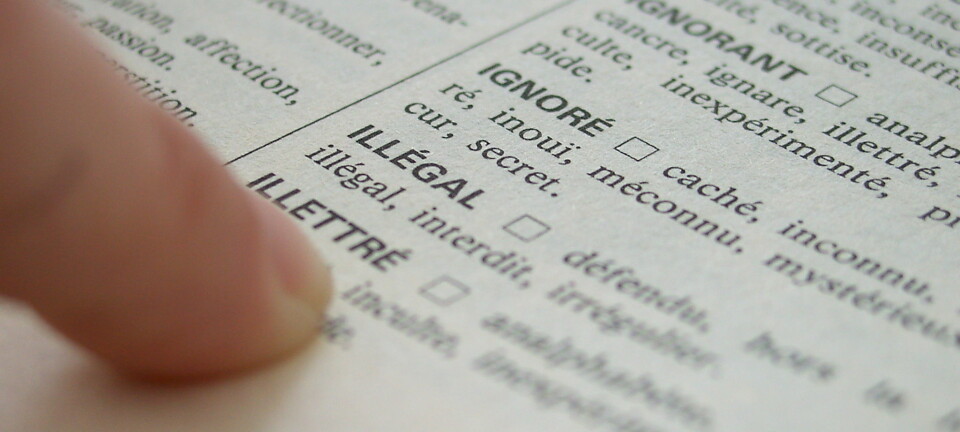An article from Norwegian SciTech News at SINTEF

Visual language will give better online services
When you last bought a book or a trip online, did you have a good or poor user experience?
Denne artikkelen er over ti år gammel og kan inneholde utdatert informasjon.
The number of digital services that we daily deal with has exploded.
We find them in a range of different marketing channels and across various technical platforms, and we order everything from cinema tickets to new summer clothes and holidays. Even public services have gone digital, and this year a million Norwegians submitted their tax return online.
But steps in an service are not always in a logical sequence, and our encounters with service providers can sometimes result in odd customer experiences.
Fragmented contact
''One of the possible reasons behind a disjointed service might be when a company has an internet department, a customer service centre – and different staff writing any letters or texts that the company sends. Or a company might have purchased several new computer systems but has not meshed these together," says Ragnhild Halvorsrund of SINTEF ICT, head of the VISUAL research project.
"For example, when the coffee machine needs servicing, first of all you have to contact someone, then arrange for it to be collected, which involves shipping; you receive a confirmation, order status and tracking information by SMS and e-mail from the manufacturer and logistics department; then you have to log in to internet banking when you get an invoice, etc. Or you book a flight online, and everything from check-in to choosing a seat takes places in a fragmented dialogue by SMS and e-mail. The repeated interactions between customer and provider must be logical and provide a good experience," she says.
Streamlined dialogue
The researchers will be working with the consultancy firm Halogen, Linköping University and Hafslund Strøm, the website FINN.no and DIPS to develop a new, visual language for service providers. Halogen is the project owner, since the agency's main focus is on service design.
Service design is a new speciality that focuses on a more coordinated, customer-oriented way of developing services. Service design can be invaluable during the ideas and concept phase, but does not have a systematic format for describing how to turn the objectives of a service into reality.
The visual language on which this project is focusing consists of diagrams and symbols. It starts by looking at the points of contact between customer and service provider, and produces a graphic description of sequences and time flow. The aim is to simplify communication between designers, decision-makers, product owners, technologists and everyone involved in developing the service.
Scenarios and service models
During the first phase of the project, the researchers have begun defining what words will be used to serve as a central terminology and define sequences and outcomes during interactions between customer and provider, when things should happen and parties that are involved.
They are also developing the virtual 'service models' and scenarios that will be able to detect subtleties within the customer experience in situations such as online shopping and booking flights or a care service. The service models will be used for training, but also as an aid to developing and evaluating the language.
The visual language will be connected to the company's internal systems. Its most important utility value may be in its ability to visualise time-flow from the customer's angle – what is known as the customer journey. The aim is to make it easier to discover illogical transitions in services, and improve customer satisfaction and profitability.
Spectrum of services
The corporate partners in the project cover a wide spectrum of services in different sectors: Hafslund Strøm (electricity supplier), FINN.no (digital marketplace) and DIPS (digital patient records and eHealth). The visual language will be tried out with these companies on annual cycles, and this will form the basis for assessing and developing the language.
"We will be working with Hafslund Strøm to chart the experience and behaviour of the customer in terms of electricity supply over time. The corporate market is the focus with FINN.no, and here we are looking at options to make better use of self-service systems. With DIPS, we will consider improvements in the referral process in Norwegian hospitals", concludes Halvorsrud.
----------------
Read the Norwegian version of this article at gemini.no

































